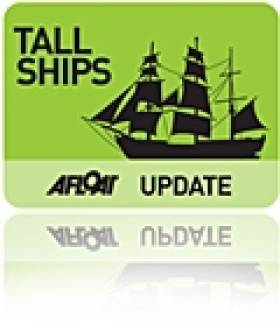Displaying items by tag: Stangford Lough
Antigua On All-Island Visit
Antigua was originally a fishing boat built in 1957 at Thorne, Yorkshire but her appearance is completely different today. Gone are the fish as the vessel spent four years undergoing reconstruction for the purposes of accommodating paying-passengers. The work was completed in 1997 and this has included the provision of sixteen double cabins in luxurious surroundings.
Individual booking cruises can be made on the brigantine and her fleet-mates which are owned by the Tall Ships Company which take passengers on destinations not just in European waters but also to the Arctic.
The company also operate another brigantine the Artemis, the barque Artemis, the schooner Mare Frisium and the clipper Elizabeth. For further information about the company click here.
























































